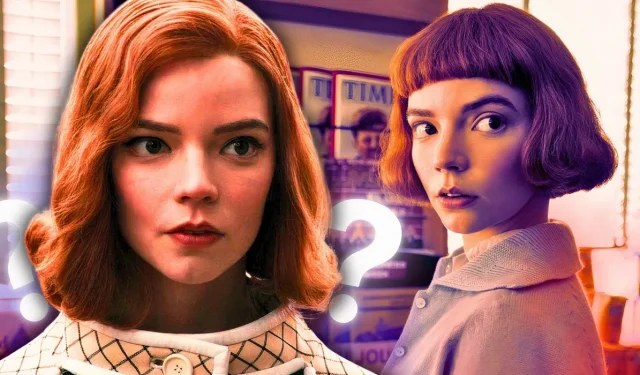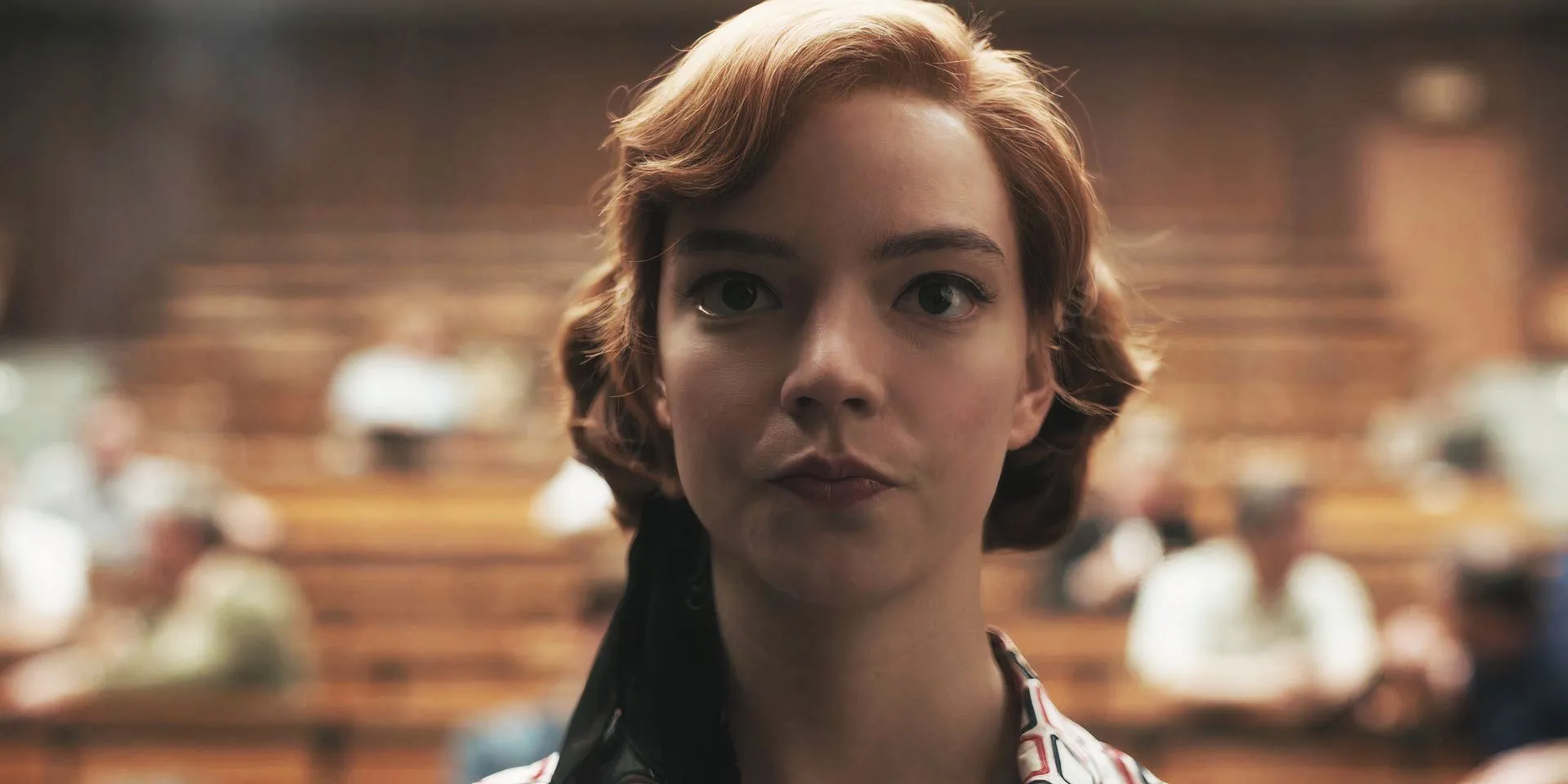
The Queen’s Gambit may have concluded its narrative, but its ending left many viewers pondering the fate of Beth Harmon, portrayed by Anya Taylor-Joy. The miniseries chronicles the life of this chess prodigy as she breaks through the patriarchal barriers of the Cold War chess world, grappling with addiction, emotional struggles, and isolation along the way.
To fully appreciate the finale, it’s important to reflect on Beth’s journey leading to the pivotal 1968 Tournament of Champions in Moscow. The series touches on her strategic approach that paved the way to her ultimate victory, yet several thematic elements regarding her future remained somewhat vague after the climax of the story.
What Happens In The Queen’s Gambit Ending
Despite Last-Minute Setbacks, Beth Becomes A Chess Grandmaster

The series finale, titled “End Game,”signifies both a triumph for Beth and the dawn of a new chapter in her life. Despite grappling with the haunting memory of her mother’s tragic death and a long-standing addiction to tranquilizers, Beth emerges from her struggles into a healthier and more hopeful state by the series’ end. The preceding episode, “Adjournment,”sets the stage as she travels to Paris to face off against Russian chess champion Vasily Borgov (Marcin Dorocinski), a formidable opponent.
In a night marked by excess, Beth succumbs to temptation, drinking heavily and spending time with the magnetic Cleo, which jeopardizes her preparation. Following the funeral of Mr. Shaibel, her mentor, Beth experiences an emotional breakdown. However, with the encouragement of her friend Jolene (Moses Ingram) and a newfound fitness regime, she overcomes her drinking problem and makes her way to Russia for a chance to relive her chess ambitions.
Elizabeth Harmon & Vasily Borgov Final Game Explained
The Final Match In The Queen’s Gambit Was Also An Intense Awakening For Beth

The climactic chess match in The Queen’s Gambit draws inspiration from a real-world game played between Vassily Ivanchuk and Patrick Wolff at the 1993 Biel Interzonal. Beth opts to start with The Queen’s Gambit—an unexpected choice, as her usual opening move involves e4. This classic strategy, which dates back to the 15th century, demonstrates Beth’s willingness to explore new tactics.
Initially, Beth holds her ground well in the match. However, when Borgov suggests an adjournment, it requires him to write down his next move and seal it in an envelope. The adjournment serves both to relieve fatigue and to grant each player the opportunity to reassess their strategies. Borgov’s statement, “I can fight against anyone but time,” implies the weight of this moment.
This adjournment becomes a pivotal turning point for Beth, who realizes the support network around her, including Townes, Benny, and Harry. Their encouragement helps her to confront her struggles with substance abuse while meticulously analyzing Borgov’s gameplay for weaknesses.
While Borgov offers a draw—which he’d prefer over a loss—Beth declines, knowing that settling for a tie is not an option for her either. The next day, in a pivotal moment of clarity and strength, Beth accesses a mental chessboard without relying on drugs, indicating that she has triumphed over her inner demons. Shortly thereafter, Beth implements a winning strategy, achieving victory over Borgov in just 19 moves and clinching the tournament.
Harmon Vs Borgov’s Real-Life Inspiration
The Queen’s Gambit Ending Was Inspired By Multiple Real Chess Players And Matches

The showdown between Harmon and Borgov pays homage to the legendary game between American chess prodigy Bobby Fischer and Russian grandmaster Boris Spassky during the 1972 World Chess Championship, where Fischer famously triumphed. The creators, inspired also by Chess Grandmaster Bruce Pandolfini’s expertise, ensured the chess moves depicted were accurate and credible for the series. Additionally, Beth’s character supports her narrative, which mirrors elements of Garry Kasparov’s life, who also contributed to the show’s authenticity.
Queen’s Gambit’s Final Scene (Does Beth Stay In Russia?)
It’s Unlikely Beth Didn’t Return To The U.S.A

Upon emerging victorious, Beth is unable to board the government-assigned car back to the airport. Instead, she wanders towards a Moscow park where she encounters a lively group of older men playing chess, who are captivated by her prowess. An elderly gentleman, reminiscent of Mr. Shaibel—the man who introduced Beth to the game—invites her to play.
The Queen’s Gambit achieved significant recognition, winning two Golden Globe Awards, including one for Best Limited Series. As Beth agrees to a game outside of formal competition, the series concludes, highlighting her growth and her embrace of a more vibrant existence. Once an orphan who grew up in a challenging environment, Beth found solace and identity within chess thanks to Mr. Shaibel, whose memory now guides her.
This final scene symbolizes Beth’s newfound maturity as she engages with others over the board, signifying her ability to open up emotionally. While it’s suggested that she might remain in Russia for a while, her journey likely leads her back to the U.S., where she can reconnect with those who care about her well-being.
What The Queen’s Gambit’s Ending Really Means
Beth Finally Finds Her Place In The World





The concept behind the Queen’s Gambit in chess is a calculated sacrifice to secure dominance in the game’s center. Reflecting her personal journey, this gambit serves as a metaphor for Beth’s sacrifices and struggles: she understands that reliability may sometimes demand the relinquishment of essential parts of oneself to attain ultimate success. The people around Beth, including her adoptive mother Alma, Harry, and Jolene, have all made their own sacrifices to help her rise to prominence.
Now grasping the weight of their sacrifices, Beth recognizes the necessity of facing her demons, with the most daunting of all being her battle with addiction. Chess has both served as her refuge and, at times, exacerbated her dependency. However, freed from her inhibitions, she is finally at peace. Her decision to play simply for enjoyment in the park exemplifies her rekindled passion, not dictated by obsession.
Beth’s transformation signifies a breakthrough; she welcomes love and recognition into her life after years of isolation. Having reformed her relationship with chess, she begins to release the pain from her past, stepping into an emotionally liberated space. The narrative beautifully concludes, underscoring that no matter the setting, Beth has fostered an internal sense of belonging and comfort.
This newfound connection to herself opens the door to a healthier discourse about friendship and support, indicating a pathway to healing and joy that grants the series its fulfilling resolution.
How The Queen’s Gambit’s Ending Compares To The Book’s
The Netflix Show Closely Mirrors The Source Material

In the book, as Borgov acknowledges his defeat, he stands and hands her his king, stating, “It’s your game. Take it.”Similarly to the series, Beth visits a park in Moscow, where she plays an oblivious elderly man who doesn’t recognize her as the reigning World Champion. Regardless of the medium, Beth emerges victorious, cherishing the warmth of being cared for and the happiness of engaging with her beloved game.
The Queen’s Gambit Ending Makes It Perfect As A Miniseries
There Were No Expectations For Added Drama

Unlike many Netflix miniseries that hint at potential sequels, The Queen’s Gambit presents itself as a contained story, allowing for a conclusive arc that doesn’t leave audiences maneuvering into an ambiguous future. This deliberate storytelling choice enables the creators to craft a narrative that is both fulfilling and nuanced without reliance on external pressures for further continuation.
Instead of anticipating a second season, the creators had the freedom to conclude Beth’s journey authentically and meaningfully. Though there are countless ways the story could continue, the ending provided offers a sense of closure typical of a gripping six-hour film; it encapsulates an entire journey with a satisfying conclusion.
How The Queen’s Gambit Ending Was Received
The Final Moments Were A High-Quality Piece Of An Even Higher Quality Puzzle

When Netflix premiered The Queen’s Gambit in 2020, it received widespread acclaim, securing multiple awards including the esteemed Golden Globe for Best Limited Series, alongside a Best Actress award for Anya Taylor-Joy. The series maintains high ratings, boasting a 96% Tomatometer score and a 94% audience rating on Rotten Tomatoes, and remains among the platform’s most popular shows even years after its debut.
With all seven episodes released simultaneously, reviews focus on the entire series rather than isolating the finale, “End Game.”Nonetheless, critics admire the quality of the overall narrative that resonates from beginning to end. For instance, Lucy Mangan in The Guardian captures the essence of the series and effectively showcases the anticipation surrounding Beth Harmon’s journey:
The Queen’s Gambit functions best and for the most part as a wish-fulfilment, rags-to-riches fantasy. Will she win again, this 64-square hustler? Yes! Will she learn and grow from her (board-based) mistakes before a Soviet superplayer and show him the color of her money next time? Yes! What would it be like to be that good at something that young? To be born – fall to earth, you might say – with the kind of mind that vaults you immediately, unstoppably into a tiny elite and brings you global glory? Unlike chess, The Queen’s Gambit is slightly less than the sum of its parts, but you will have a great deal of fun watching them at work.
This perspective echoes in several other critiques, including one from Allison Shoemaker on Roger Ebert’s platform, where she draws attention to the dual heartbeats central to any compelling sports story:
Every truly great sports story has not one, but two beating hearts. There’s the sport itself, a game or competition in which the viewer becomes undeniably invested. And then there’s the player or players, someone whose life is much bigger than the game, yet is nevertheless somewhat consumed by it. “The Queen’s Gambit” has both those hearts, and both are racing. Frank, Taylor-Joy, and company never stop telling both those stories at once, and the result is a fascinating portrait of a young woman fighting to become the person she wants to be, battling for victory and for peace. When her journey brings her to Paris, she remembers the words of a woman who loved her and spends some time wandering museums, feeding her soul with something more than chess.
Leave a Reply